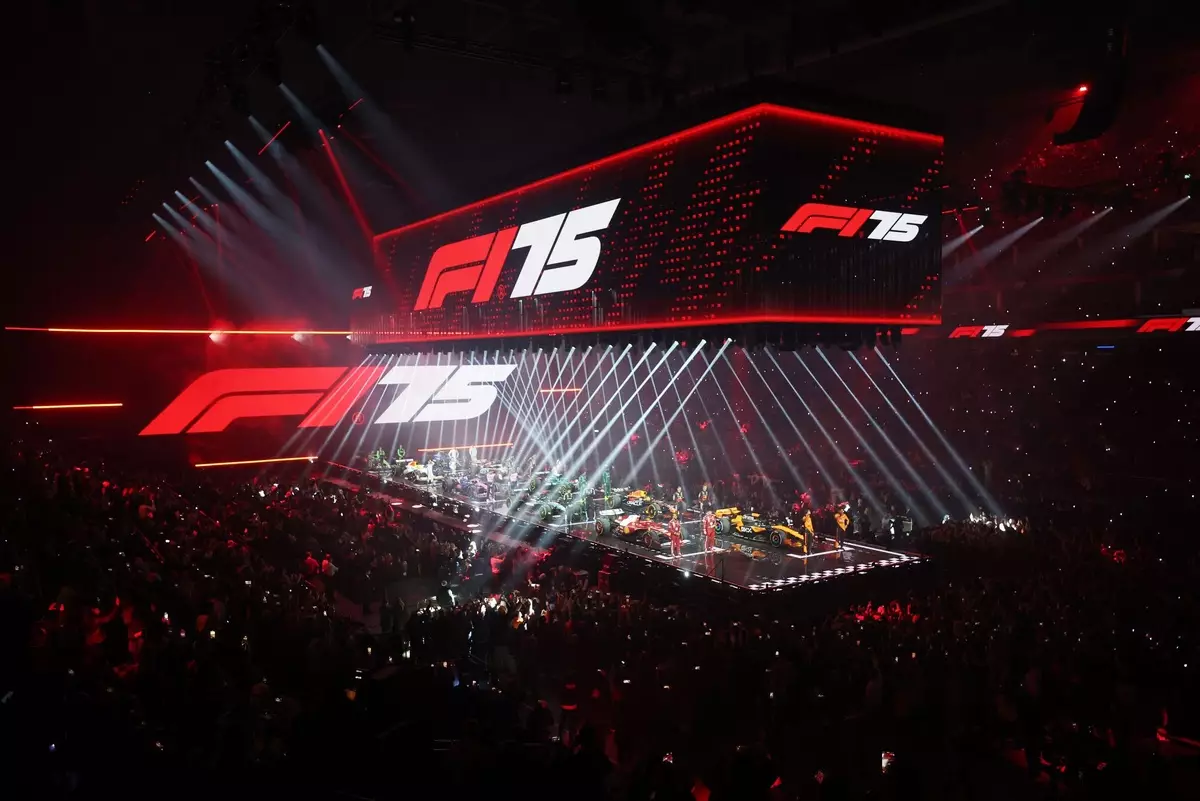The recent launch event for the F175 livery offered a snapshot of modern Formula 1 culture, blending motorsport with entertainment in a way that simultaneously thrilled and polarized fans. Hosted by comedian Jack Whitehall at London’s illustrious O2 Arena, the event was marked by ecstatic applause for star driver Lewis Hamilton and a contrasting chorus of boos aimed at team principal Christian Horner and his renowned driver Max Verstappen. However, it was the mention of the FIA, the governing body of Formula 1, that drew the loudest jeers, encapsulating the tense relationship between fans and the regulatory institution.
While many attendees appeared eager to soak in the spectacle, critics lurking within the paddock expressed deep-seated grievances about the event’s extravagant nature. The hefty price tag for such an occasion—rumored to be in the vicinity of £800,000 for Red Bull’s seven-minute presentation—prompted questions not only about financial responsibility but also about the appropriateness of allocating scarce driver time for a grand event rather than traditional promotional activities. This friction underscored a key point: the event was designed to reinvigorate Formula 1’s public image and reach out to potential fans, rather than catering solely to long-time purists.
Indeed, the motive behind the lavish festivities was clear: to bridge the gap between Formula 1 and a broader audience. By taking F1 to the city and creating an environment accessible to fans who might never experience a live race, the organizers aimed for inclusivity. The event demonstrated their commitment to diversifying the sport’s appeal—an ambitious but significant step in the ongoing evolution of Formula 1.
Hamilton’s debut appearance in Ferrari red certainly served as a highlight, capturing the attention of fans and critics alike. His presence emphasized the ongoing narrative of transformation in the sport, while McLaren’s enthusiastic reception reaffirmed its status as a fan-favorite team. This shared excitement mitigated the sting of criticism; as F1 aims to foster a younger, more diverse following, the celebratory atmosphere largely succeeded in welcoming newcomers.
Simultaneously, the event played out almost like a theatrical production, complete with its own villains and comedic relief. Horner, who has been portrayed as a foil in Netflix’s “Drive to Survive,” engagingly deflected criticism from the jeering crowd. His demeanor suggested a seasoned performer aware of his character in the F1 drama—making the situation almost comical. The presence of his wife, Geri, added an element of personal interest, while fans enjoyed the pantomime created by the contrasting responses to him and Verstappen.
Interestingly, Verstappen too faced some backlash, particularly fueled by an earlier quip from Whitehall aimed at their previous clash with fellow driver George Russell during the Qatar Grand Prix. Such moments demonstrated not only the underlying tensions among competitors but also served as a reminder that the sport thrives on rivalry and drama, drawing fans into its narrative.
The stylistic choices of the various presentations ranged in quality, revealing a mixed bag success-wise. Aston Martin’s tribute to its James Bond heritage felt polished and sophisticated, while McLaren’s nod to its victorious past captured a nostalgic sentiment among enthusiasts. Red Bull’s heavily produced video segment entertained but felt disconnected from the more spontaneous moments of the live interaction. Some industry insiders lamented that there was insufficient focus on the F1 Academy, Formula 2, and Formula 3, suggesting a missed opportunity to spotlight the sport’s burgeoning talent. Furthermore, an element such as a live car sound demonstration, which captivated fans at the MotoGP launch, could have heightened excitement for the F175 unveiling.
Despite subtle shortcomings, the F175 livery launch emerged as a noteworthy success—a gamble that paid off beautifully. The event transformed a typically mundane car presentation into a captivating spectacle, engaging the audience in a way that was refreshing and entertaining. Yes, there are areas for improvement and considerations for the purists, but the overarching goal was achieved: to evolve F1’s image and connect with a new generation of fans.
In an era where motorsport must adapt to survive, Formula 1’s willingness to innovate and experiment should be applauded. The F175 event not only entertained but offered a glimpse into the sport’s future—one that embraces change and aims to transcend the boundaries of traditional motorsport engagement. As fans left the arena buzzing with energy, it was clear that the event, against all odds, had effectively done its job.


Leave a Reply